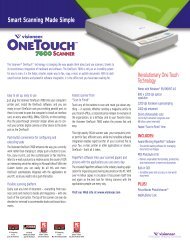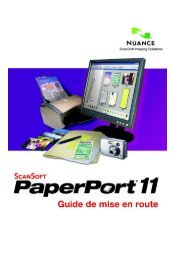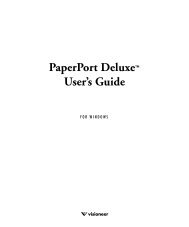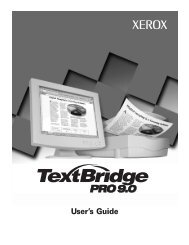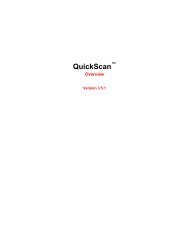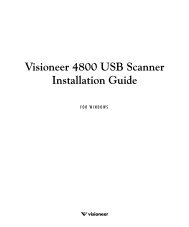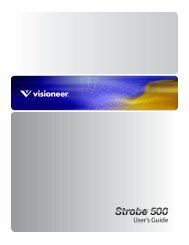Paint Shop Pro X User Guide - FTP - Corel Corporation
Paint Shop Pro X User Guide - FTP - Corel Corporation
Paint Shop Pro X User Guide - FTP - Corel Corporation
You also want an ePaper? Increase the reach of your titles
YUMPU automatically turns print PDFs into web optimized ePapers that Google loves.
The <strong>Corel</strong> <strong>Paint</strong> <strong>Shop</strong> <strong>Pro</strong> PspImage file format supports layers, alpha channels, andother features used in creating images. It is recommended that you save and edit yourimages as PspImage files. You can then save the file to a standard file format if you wantto e-mail the image, use it on a Web page, or send it to a printing service.The list below provides you with some basic information about common file formats.• JPEG — a standard file format for digital photos that is suitable for e-mail and theWeb. It uses lossy compression, which ensures a small file size but entails a loss ofimage data each time you save. For this reason, this format is not recommended forediting photos unless a high quality setting is used. This file format supports EXIFand IPTC data, which can be used to provide information about the photo, such aswhen a photo was taken.• TIFF — a standard file format for printing and sharing images between programs.It uses non-lossy compression. Although you do not lose image data each time yousave, the larger file size is less suitable for e-mail and the Web. TIFF can save datain the CMYK color mode for printing, and it supports EXIF and IPTC data.• PNG — a file format widely used for Web images. It uses non-lossy compression toreduce the file size without losing image data.• RAW — a file format that is typically used by professional photographers. Thisformat provides uncompressed, unprocessed image data and gives you the mostcontrol over how an image is processed. You must have a camera that capturesdigital images in this format, and software, such as <strong>Corel</strong> <strong>Paint</strong> <strong>Shop</strong> <strong>Pro</strong>, that letsyou open and edit the file.For information about the compression methods used in <strong>Corel</strong> <strong>Paint</strong> <strong>Shop</strong> <strong>Pro</strong> files, see“Saving images” in the Help. When you save a new image, <strong>Corel</strong> <strong>Paint</strong> <strong>Shop</strong> <strong>Pro</strong> letsyou select its location, name, and file format. When you save an image and then edit it,the image title bar displays an asterisk, or modifier tag, after the filename to indicatethat the file has been modified. This tag disappears each time you save your work.You can also automatically save your files at specific intervals to avoid losing your workif your computer shuts down unexpectedly. For more information, see “Setting Autosavepreferences” in the Help.Important! If you do not change the file format of the file you open and you want to preservethe original image, you must use the Save As command, rather than the Save command, toavoid overwriting the original file.28 <strong>Corel</strong> <strong>Paint</strong> <strong>Shop</strong> <strong>Pro</strong> X <strong>User</strong> <strong>Guide</strong>



